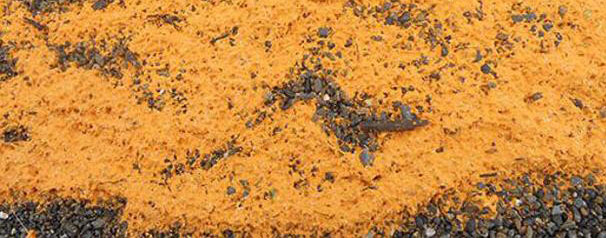 Last week, a bright orange jelly or “goo” floated up on the beaches of Kivalina, a remote Alaskan village of just over 400 residents. Now scientists at the National Oceanic and Atmospheric Administration have determined that the goo is not man-made but rather millions of microscopic invertebrate eggs, filled with fatty droplets. Experts are guessing that they are from some sort of crustacean, but so far have been unable to identify which species of invertebrate laid all the eggs or whether the mass of eggs will prove harmful to the village water supply or impact local fishing.
Last week, a bright orange jelly or “goo” floated up on the beaches of Kivalina, a remote Alaskan village of just over 400 residents. Now scientists at the National Oceanic and Atmospheric Administration have determined that the goo is not man-made but rather millions of microscopic invertebrate eggs, filled with fatty droplets. Experts are guessing that they are from some sort of crustacean, but so far have been unable to identify which species of invertebrate laid all the eggs or whether the mass of eggs will prove harmful to the village water supply or impact local fishing.
Old Salt Blog
a virtual port of call for all those who love the sea , hosted by nautical novelist Rick Spilman
